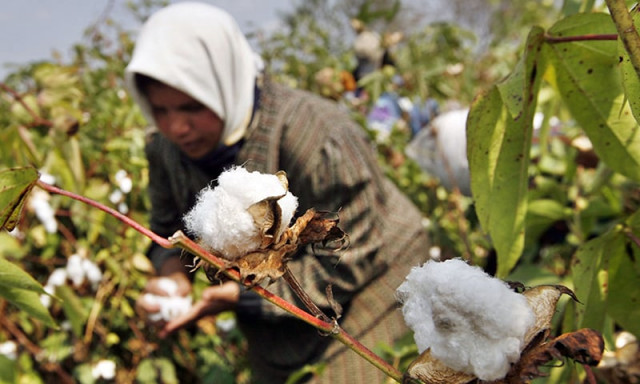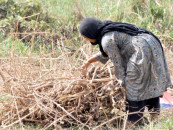30% water shortage feared for Kharif crops
IRSA body apportions 31.13MAF water to Punjab, 28.81MAF to Sindh

Amid high system losses, the Indus River System Authority (Irsa) has projected water shortage of up to 30% for the Kharif crops, warning that the shortage will be even higher at the time when farmers would be sowing cotton, rice and maize crops, and likely to drop to 7% during the late season.
The Kharif season runs from April to September. For 2024 season, the water regulator has projected the availability of a total of 63.61 million acres feet (MAF) of water. Out of this, Punjab will get 31.13 MAF, Sindh (28.81 MAF), Khyber-Pakhtunkhwa (0.82 MAF) and Balochistan would receive 2.85 MAF of water.
The Irsa Advisory Committee (IAC) met on Tuesday, with its chairman and member Balochistan Abdul Hameed Mengal in the chair. The meeting discussed water availability criteria for the Kharif 2024. It also estimated 13.67 MAF water losses during the season.
The meeting was attended by all Irsa members, besides representatives of the Water and Power Development Authority (Wapda), the provincial irrigation and agriculture departments, Meteorological department and others
The IAC unanimously agreed on the data of anticipated inflows at the rim stations for Early and Late Kharif 2024. The total inflows at rim stations were estimated at 99.41 MAF, out which 23.55 MAF inflows will be available in early season and 75.87 MAF in late Kharif.
The available inflows were estimated at 11.72 MAF at Kabul-Nowshera, 16.21 MAF at Jhelum-Mangla, and 2.46 MAF in eastern rivers. The system losses were estimated at 13.67 MAF, besides 30% water shortage in early Kharif and 7% in late Kharif.
The IAC also reviewed the system operation during the Rabi 2023-24 (October-March) season. The meeting expressed satisfaction with the overall seasonal close at 17 % shortages against the anticipated shortfall of 15%.
The Pakistan Meteorological Department (PMD) forecast higher-than-normal temperatures during Kharif season. The meeting was informed that winter snowfall in the catchments areas of Indus and Jhelum was recorded at 34.8 inches against the normal of 50.5 inches ie 31% less.
It was agreed that Punjab and Sindh would activate discharge observation cells (DOCs) for data reporting at different locations. Punjab DOCs will be stationed at Guddu, Sukkur and Kotri in Sindh, while Sindh DOCs will monitor discharges at Jinnah, Taunsa, and Panjnad headworks and at Chashma in Punjab.
The meeting unanimously decided to constitute a committee, comprising Irsa members from Punjab and Sindh along with chief engineers from the irrigation departments of the two provinces to physically review and monitor the sites and furnish the report for resolution of the operational constraints.
Towards the end of the meeting, the Mangla authorities briefed the IAC about operational constraints.
After detailed deliberations, Wapda Member Power assured that all irrigation indents would be fulfilled during Kharif 2024.



















COMMENTS
Comments are moderated and generally will be posted if they are on-topic and not abusive.
For more information, please see our Comments FAQ